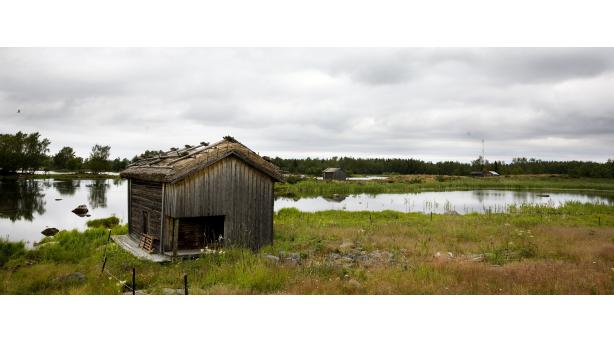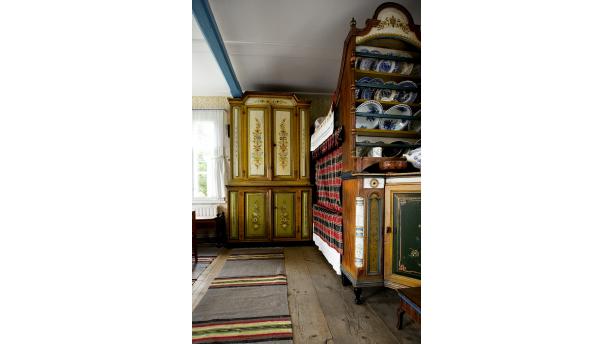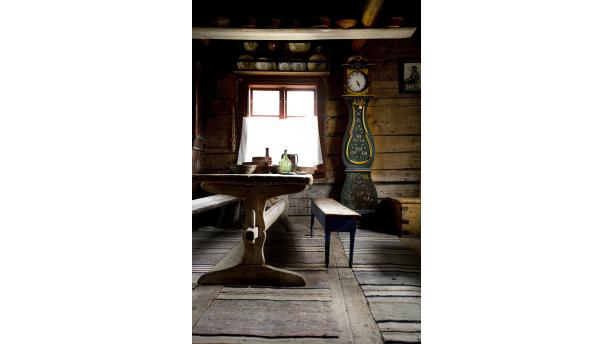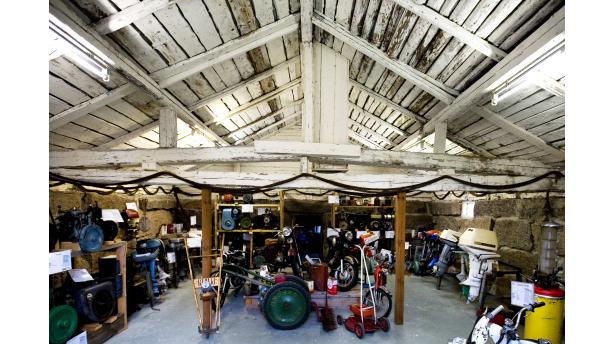Russian soldiers marched through Björkö to Sweden in 1809 and overnighted in the homes of the villagers, whereupon a whip belonging to the driver of the Russian general Barclay de Tolly was forgotten in the village. The whip is displayed in the soldier’s cabin.
Museum A-Ö » Technology and industry » Björkö Museum Area (Björkö boat museum, Bodback and Morten’s Farm and Motor Museum)
Björkö Museum Area (Björkö boat museum, Bodback and Morten’s Farm and Motor Museum)
- Rural life and craft
- Wars and wartime
- Technology and industry
- The archipelago, fishing and seafaring





Did you know...
Russian soldiers marched through Björkö to Sweden in 1809 and overnighted in the homes of the villagers, whereupon a whip belonging to the driver of the Russian general Barclay de Tolly was fo ...
The excellently preserved entity of the Björkö museum area offers a good example of a typical Björkö home, where can be found cupboards decorated with flower paintings and engravings, which are characteristic for the island. The inhabitants’ livelihood and terms of living are represented in the Bodbacken fishing port, the Engine Museum and the spinning mill. The historical milieu and village are situated in a scenic world heritage site.
The Björkö museum region consists of the Mårten’s Farm Museum, the Engine Museum, the soldier’s cabin, Björkö boat museum and the old Bodbacken fishing port. The museum area offers a wide view into the islander life, where the fishing, the wars, the innovative solutions of daily life and the eccentric personalities of the island become visible.The newly built Björkö Boat Museum in Svedjehamn showcases clinker-built traditional boats, tools related to seal hunting and various types of fishing, as well as touching stories from life in the archipelago. The museum is located along the path to Saltkaret, just a stone’s throw from the Salteriet, and offers activities for all ages.
Björkö is known for its flowered cupboards and beds, and there are fine examples of a typical Björkö home in the museum area. The last residents of the Mårten’s Gård estate were chiropractor Emil Doktar, his wife Ester and their adopted daughter Edit. The Björkö antiquarian society was able to buy the Mårten’s Gård estate in 1992 with the help of a donation. The interior of the house is largely the same as it was hundred years ago, as the residents were sparing and didn’t throw anything away. The estate is from the 18th century, but the house dates back to the year 1844. The typical flower paintings and characteristic features of different artists can be seen in the barn, where some genuine Björkö cupboards are displayed.
There is an engine museum in the old cowshed, where 130 different kinds of motors from the 1950s onwards can be seen. On display are for instance an automized netweaving machine, boat engines, mopeds, snowmobiles and the “Paniken patentti”, which was the predecessor of the modern snowmobiles. On the estate are also the only surviving windmill of the archipelago, a carpenter’s workshop, a carder’s workshop and a spinning mill. There were namely a lot of sheep on the Björkö island. The soldier’s cabin with its almost original interior offers an authentic view into the Björkö of the latter 18th century. Soldier Nils Krok is likely to have been residing in the cabin at the end of the 18th century.
The Bodbacken fishing port is situated approximately 2,5 km towards the harbour. The harbour was in use until the 1940s, when it became too shallow due to upthrust. The sealhunters’ and the fishers’ cottages and the boathouses, however, still remain in their former places, and during the summer large fykes and fishnets are spread out on display there.
Historical hikings, that start from the Björkö of 1809 and continue throughout the village in the form of stories, presentations and even samples, are arranged in the region. The hike ends in the Svedjehamn harbour, where it is possible to enjoy a cup of coffee and sandwich at the Café Salteriet and visit the exhibition displaying the history and antiquities of Björkö. “The Hike of Two Harbours” is another theme guidance, where it is possible to get acquainted for instance with Bodbacken and the annually arranged post rowing between Svedjehamn and the Holmön island in Sweden. At the museum are also arranged the theme hiking “On the Tracks of the Greater Wrath” and strorytelling evenings, where the theme can be for instance life in Svedjehamn in the old times, or the wartimes.




